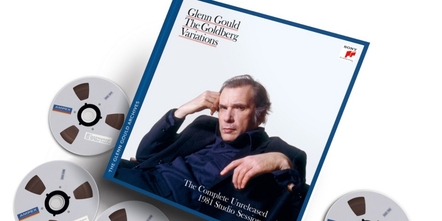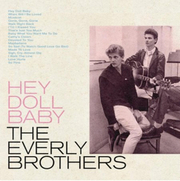New York, NY (Top40 Charts) Forty years ago, on
September 2, 1982 - the year of Michael Jackson's Thriller and Steven Spielberg's E.T. -
Glenn Gould's legendary second recording of the Goldberg Variations closed a circle that his revolutionary 1956 recording of Bach's masterpiece had opened. While his first recording is the exuberant, fast-paced work of a 22-year-old pianistic prodigy, his second is the measured, richly detailed interpretation of an experienced studio artist. Just five weeks later, the Canadian pianist died unexpectedly, leaving the world a masterpiece of recording art that - awarded two GRAMMYs - is still one of the most listened to classical albums worldwide.
In Gould's 90th anniversary year and 40 years since the second album's first release, Sony Classical is proud to announce the release of
Glenn Gould: The Goldberg Variations - The Complete Unreleased 1981 Recording Sessions, a uniquely detailed window into the creation of this classic recording.
Across 11 CDs, the set includes the double GRAMMY-winning final release as well as everything committed to tape during the 1981 sessions, restored from the original ¼-inch analogue tapes and mastered using 24 bit / 96 kHz technology. As well as the takes themselves, the session recordings include Gould and the producers' conversations, all of which are transcribed in a hard-cover coffee-table book which also contains an annotated score.
The 216-page book additionally features extensive documentation about the recording process including facsimiles of archival documents, a complete transcript of all studio conversations, as well as illuminating articles about the recording process - including the recollections of Richard Einhorn, one of the producers who worked with Gould on the recording.
Gould was famously dismissive of the earlier recording of Bach's variations that had made his name, adopting a notably slower and more expansive approach the second time around. As Einhorn writes in his article: "Glenn's thinking about the Goldbergs had evolved considerably since his original recording in 1955. As I understand it, he developed a way to interconnect the variations through an elaborate proportional tempo plan - the upcoming variation's tempo would be some ratio of the previous variation. This would enable Gould to have a wide variety of musically related tempi for the set."
Working in April and May 1981 and frequently recording late into the night, Gould and the CBS Masterworks studio team, headed by producer Sam Carter, were joined by the French filmmaker Bruno Monsaingeon, who was making a documentary series about Gould; Monsaingeon can also be heard in the recordings.
These sessions were also the last ever to take place at Columbia's legendary 30th Street Studio in New York, the place where so many famed recordings were made by the likes of Miles Davis,
Frank Sinatra and Leonard Bernstein.
Fascinating for any fans of this unique artist, this set documents and preserves a landmark recording, serves as a source for further research and offers captivating insights into the working methods of one of the greatest musical personalities of the 20th century.
Set Contents:
CD 1: April 22 & 23, 1981 - Aria, Variations 1-4, 6, 7, 9, 10
CD 2: April 23, 1981 - Variations 11-15
CD 3: April 24 & 25, 1981 - Variations 16-18, 8, 3, 1, 2, 4
CD 4: April 25, 1981 - Variations 6, 7, 9, 10, 12
CD 5: April 25, 1981 - Variations 13, 14, 16, 17, 8
CD 6: May 12, 1981 - Variations 19, 21-25
CD 7: May 13, 1981 - Variations 25-30
CD 8: May 14 & 15, 1981 - Aria da capo, Variations 20, 5, 26, 27, 29, 24, 30, Aria
CD 9: May 16, 1981 - Aria, Aria da capo, Variations 25, 20
CD 10: May 16 & 19, 1981 - Variations 25, 5, 24, 10, 14, 25, 8
CD 11: THE GOLDBERG VARIATIONS
























